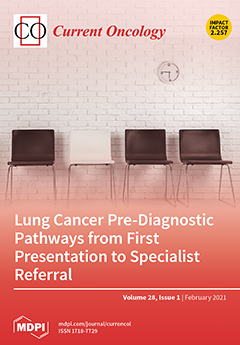Open AccessStudy Protocol
Rationale and Design of BeatNF2 Trial: A Clinical Trial to Assess the Efficacy and Safety of Bevacizumab in Patients with Neurofibromatosis Type 2 Related Vestibular Schwannoma
by
Masazumi Fujii, Masao Kobayakawa, Kiyoshi Saito, Akihiro Inano, Akio Morita, Mitsuhiro Hasegawa, Akitake Mukasa, Takafumi Mitsuhara, Takeo Goto, Shigeru Yamaguchi, Takashi Tamiya, Hirofumi Nakatomi, Soichi Oya, Fumiaki Takahashi, Taku Sato, Mudathir Bakhit and on behalf of the BeatNF2 Trial Investigators
Cited by 9 | Viewed by 3427
Abstract
Neurofibromatosis type 2 (NF2) causes bilateral vestibular schwannomas (VSs), leading to deafness. VS is treated by surgery or radiation, but neither treatments prevent hearing loss. Bevacizumab was found to be effective in suppressing the tumor’s growth and may help to improve hearing. We
[...] Read more.
Neurofibromatosis type 2 (NF2) causes bilateral vestibular schwannomas (VSs), leading to deafness. VS is treated by surgery or radiation, but neither treatments prevent hearing loss. Bevacizumab was found to be effective in suppressing the tumor’s growth and may help to improve hearing. We are conducting a randomized, double-blind, multicenter clinical trial to verify the efficacy and safety of bevacizumab in NF2-related VS. The primary objective is to evaluate the efficacy of bevacizumab in improving hearing in the affected ear. One of the secondary objectives is to evaluate bevacizumab’s efficacy in rechallenge treatment in relapsed cases. Sixty patients will randomly receive either bevacizumab or a placebo and will be clinically observed for 48 weeks in the initial intervention phase. In the first half (24 weeks), they will receive either 5 mg/kg of bevacizumab or a placebo drug. In the second half, all patients will receive 5 mg/kg of bevacizumab. If hearing function deteriorated in a patient who had shown improvement during the first phase, a rechallenge dose with bevacizumab would be offered.
Full article
►▼
Show Figures






